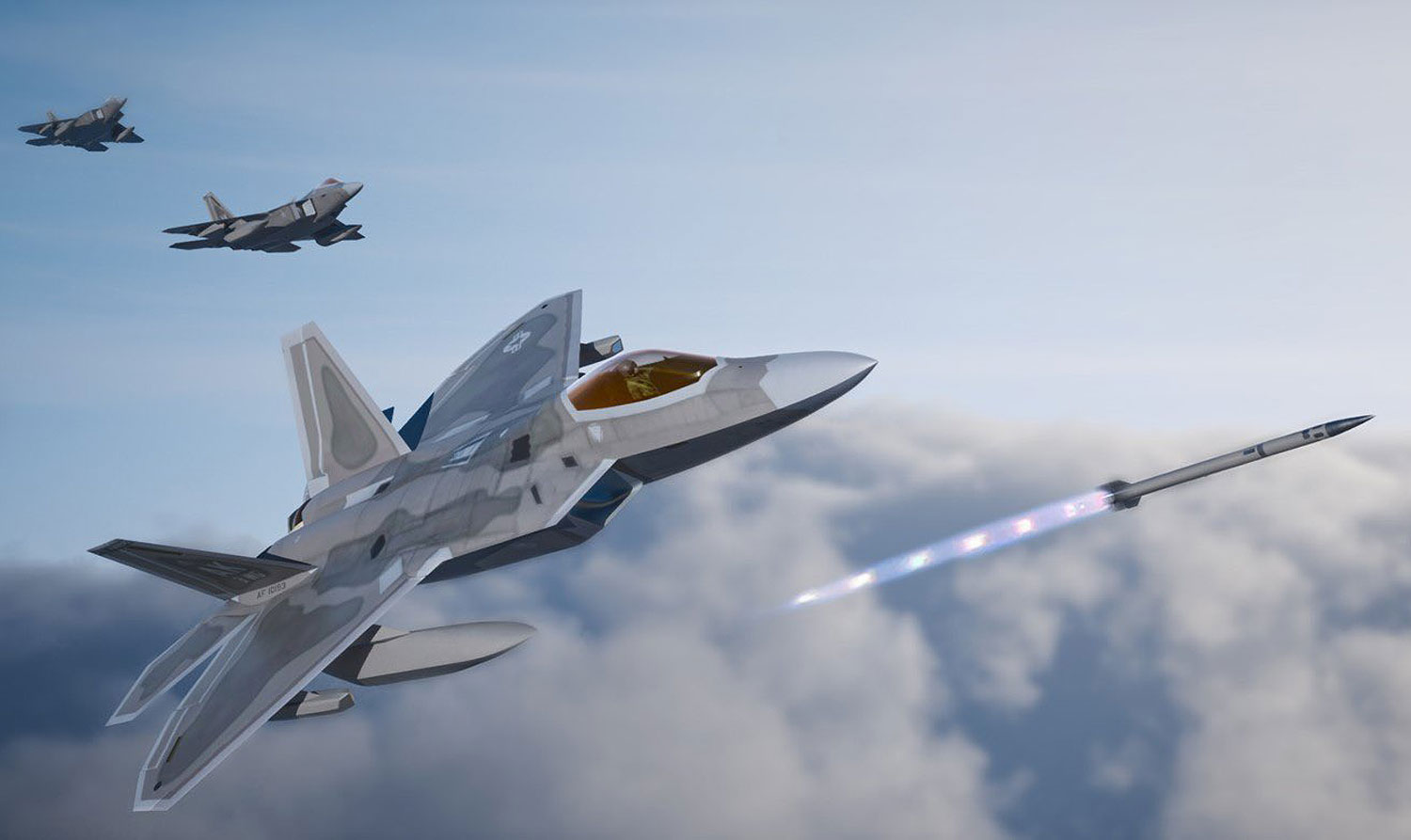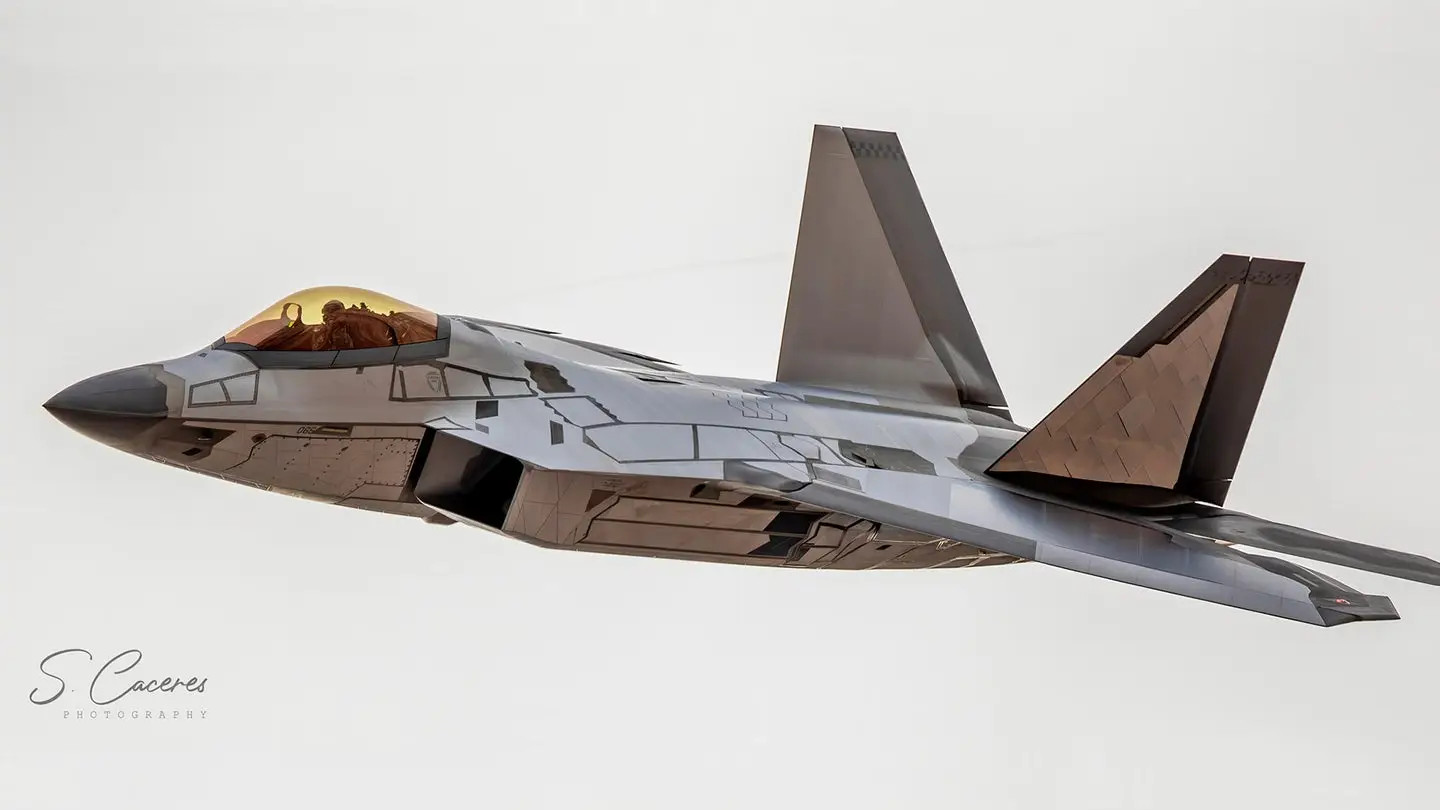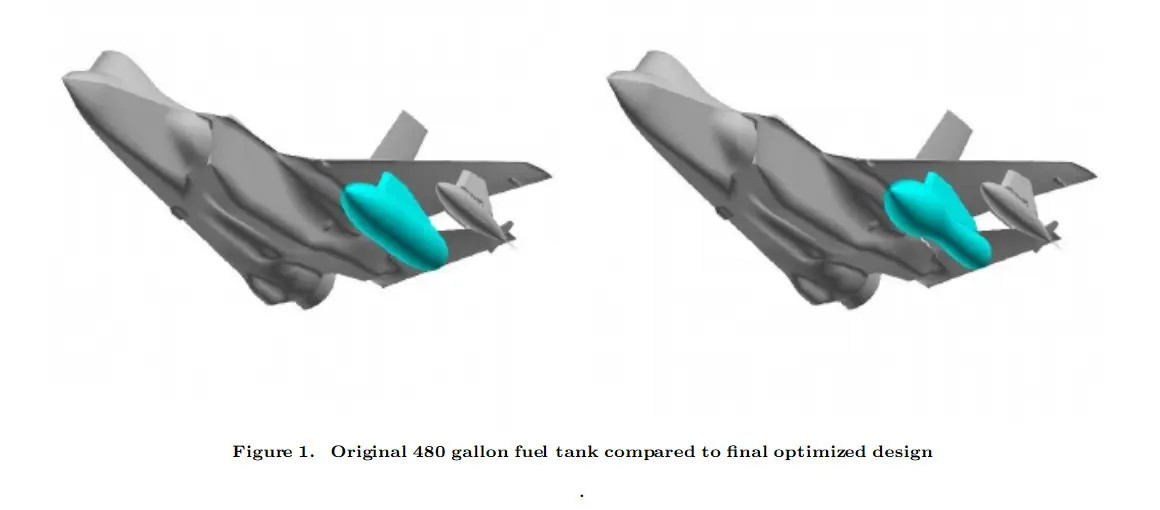We have just got our first look at an F-22 Raptor sporting its new stealthy external fuel tanks and underwing infrared sensor pods.
User @Task_Force 23 on X snapped a picture of the Raptor in this totally new configuration today as it was flying around near Mojave Air And Space Port. As such, this was almost certainly an Edwards-based F-22 assigned to testing duties.
The Raptor’s new stores are set to unlock new capabilities, some of them long in the making. This includes fielding a highly capable infrared search and track (IRST) system, a feature originally planned for the F-22, but was cut due to budget concerns decades ago. You can read all about this in our exclusive reporting here.
The War Zone was the first to report on the transformation the F-22 Raptor is about to go through as it transitions to the back half of its career. A few months after publishing that article and an additional report, a concept image of the F-22’s new external stores configuration emerged out of the Pentagon.

As it sits now, the fleet of roughly 180 F-22s will be replaced by the crewed Next Generation Air Dominance (NGAD) aircraft, of which the USAF wants to buy 200. The Raptors are now serving as something of an incubator for NGAD technologies. Features developed under the broad NGAD initiative can also make it to the F-22 before the NGAD tactical jet is ready for primetime. Until the F-22 finally bows out, supposedly in the coming decade, the world’s most deadly air-to-air fighter will need to be more capable than ever in order to confront emerging threats, which are numerous and growing rapidly.
The fact that the F-22 is still as feared as it is, considering it was designed in the 1980s and refined in the 1990s before beginning its relatively short production run in the new millennium, is a testament to its design. However, the vast distances that come into play operations in the Pacific theater, paired with the Raptor’s notoriously short range, as well as growing adversary air defense capabilities, prompted the advent of new low observable fuel tanks. These faceted tanks are not only stealthy, they can be punched off the jet in a way that it can regain its full performance without having a major impact on the plane’s radar cross-section. Just like the F-22’s existing non-stealthy 600-gallon tanks, the pylon will likely go with them when jettisoned, but how exactly the jet’s signature is better restored after they are dropped remains a trade secret.

Just having a stealthy, large form-factor underwing store approved for the F-22 could open up other possibilities. These include the ability to carry additional large sensors or communications systems that can fit inside them or converting the shapes into auxiliary weapons pods. Similar concepts have existed over the colorful developmental lifespan of the Raptor.
The IRST is another story. We have seen a test F-22 flying with mockups of the slender pods before, but now the actual system is likely installed. A few months ago, a Sabreliner surrogate test aircraft was spotted carrying one of the pods, with its gold-tinted infrared sensor aperture clearly visible.
Trading some radar signature for an IRST capability is telling of just how critical this feature has become, especially for spotting stealthy targets that are now propagating around the globe. Even having a pair of IRST-equipped Raptors out of a division (four aircraft) or even larger formations would drastically improve the whole’s already incredible situational awareness. You can read all about what an IRST will bring to the F-22 here.
A series of other less obvious upgrades are underway beneath the F-22’s skin having to do with processing power, radar, communications, defensive aid suite, and more. One more glaring (literally) capability that has at least been under test and evaluation is a mirror-like coating, with multiple versions of it popping up on F-22s and subsequently a number of other stealth tactical jets. Whether the F-22 will receive this coating in an operational sense is still yet to be seen and the USAF is relatively tight-lipped about its plans for it going forward, although it does acknowledge it is being evaluated.

The arrival of the F-22 fully kitted out with its new external stores comes right on time.
According to the Air Force 2025 Fiscal Year budget request, “wind tunnel testing, flight test planning and analysis, and ground testing” of the new drop tanks was complete by the end of 2023 and flight testing is due to start in the second quarter of the current fiscal year, which started in January and ends this month. The goal now is to get the ball rolling on production later this year and begin deliveries of tanks to F-22 squadrons by the end of March 2026 following the completion of developmental and operational testing and evaluation, per the budget documents.

There is a separate line in the Air Force’s proposed 2025 Fiscal Year budget for F-22 “sensor enhancement,” which expressly includes an “advanced Infrared Search and Track sensor” capability. This section says the plan is for those efforts to “continue to mature, leading to a planned F-22 flight test demonstration” in Fiscal Year 2024, which started on October 1, 2023.
A decision about whether or not to proceed with the initial production of the sensor enhancements is set to follow that flight demonstration. Developmental Test and evaluation of those systems is then set to begin in the third quarter of Fiscal Year 2025, followed by operational test and evaluation in the fourth quarter of the 2026 Fiscal Year.
How much more time the Air Force’s F-22s might have in service by the time the tanks and IRST pods become available for routine operations remains to be seen. The service hopes its future NGAD combat jets will begin entering service in 2030 or sometime shortly thereafter. Keeping the NGAD plans on schedule will be dependent on a host of factors, including future budgets.

In the meantime, the Air Force is already trying to trim down the size of the F-22 fleet. The service wants to divest 32 older Block 20 Raptors that it says are too costly to bring up to the most modern standard and are not operationally relevant in their present configuration. Exactly how accurate that statement is remains up for debate.
Work to improve the capabilities of the remaining F-22s, however long they stay in service, could find its way onto other platforms. As already noted, work to develop new capabilities for the F-22 is already feeding into the NGAD program.
Lessons learned from the stealthy stores for the F-22 could also be valuable to the F-35 program. The latter type is also facing a future that could include long-range operations in the Pacific and stealthy threats. In particular, there are currently no drop tanks, stealthy or not, certified for use on any of the three F-35 variants. Israel is reportedly developing some sort of range-extension capability for its F-35s, which could include drop tanks. Lockheed Martin has previously explored drop tanks for the F-35 and has indicated in the past that there is continuing interest from multiple operators in that capability.

IRST sensors are seeing a broad renaissance across the U.S. military and various other podded designs are already in service or development, including for use on fourth-generation tactical jets and drones. The F-35 has a quasi-IRST capability via its EOTS and DAS infrared sensor system, but the ability to carry a dedicated sensor in a stealthy under-wing enclosure could be very attractive to F-35 users.
If nothing else, the development of the new stores for the F-22 looks to be moving ahead on schedule. If testing is successful, they could be a huge help in allowing the F-22 to maintain its mantle of king of the skies until the NGAD combat jet finally arrives.
Contact the author: tyler@twz.com and joe@twz.com

